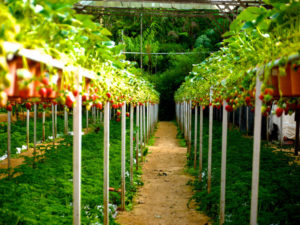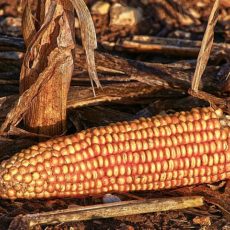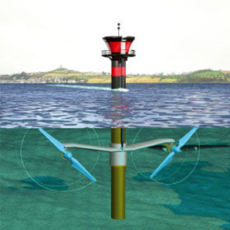 Buy Local: a piece of advice heard often without much second thought given as to whether or not it’s sound. Certainly, it makes a world of difference for local farmers and the community at large if you opt to go that route, because it provides a boost to the local economy and encourages self-sufficiency. However, if your intention is to have the lowest environmental impact possible with your dietary habits, it’s not as simple as just buying local. Should you stop at the roadside strawberry stand or keep on driving to the corporate conglomerate Super Foods International for a berry good snack?
Buy Local: a piece of advice heard often without much second thought given as to whether or not it’s sound. Certainly, it makes a world of difference for local farmers and the community at large if you opt to go that route, because it provides a boost to the local economy and encourages self-sufficiency. However, if your intention is to have the lowest environmental impact possible with your dietary habits, it’s not as simple as just buying local. Should you stop at the roadside strawberry stand or keep on driving to the corporate conglomerate Super Foods International for a berry good snack?
During the Cold War, the United States Department of Energy (in preparation for a possible nuclear attack) made the claim that food traveled approximately 1,300 miles on average to get from farm to table. That figure was the seedling of a concept that eventually evolved into “food miles”, a concern for the environmental impact of the transportation of food. It’s become a buzz phrase in recent years. “How many food miles does that hotdog have? It looks like it’s been around the block a couple times…”
Researchers estimate that transportation accounts for up to 13% of the energy that food products require, from its humble beginnings as a sprout or a calf, right down to the preparation in the kitchen of a hungry household. Though a mere 8th of the pie doesn’t seem like that much, it’s important to remember that there are a lot of mouths to feed on this planet. It adds up. In the US alone, the transport of food consumes about 235 million barrels of oil per year. Converted to kilowatt-hours, that’s approximately the amount of electricity needed to power Mexico.
That doesn’t mean you ought to stick to the food grown in your own backyard- unless it was literally grown in your actual backyard, because that would be ridiculously cool! Like calories, not all food miles are created equal. It’s very possible that food grown in another country has a smaller energy footprint than the same product grown in your state.
Take, for example, the oft forgotten island nation of New Zealand. In part peeved that kiwifruit (their national fruit) began to be produced year-round in Italy, New Zealand scientists conducted a study that makes a strong case for their products in the international marketplace. Among the findings was the revelation that Brits were better off buying lamb chops from New Zealand than they were buying their own homegrown variety, because it took only a quarter of the energy to produce. Furthermore, that energy is likely hydro-electric in New Zealand so it has a very small carbon footprint, if at all.

Even if the amount of energy to produce the product were the same, it doesn’t always follow that proximity is the best policy. Transportation of food by truck is one of the most inefficient ways of getting a product to market, barely besting air travel. Shipping by sea is the most efficient commonly used mode of transport, followed by rail. But again, transport only accounts for a fraction of the total amount of energy it takes to produce food. If it’s the middle of winter in Boston and there’s a slab of local beef at the butcher shop, it’s safe to assume that the cattle are being kept in artificially heated barns; in that case, buying beef from somewhere with a warmer winter, even if it’s a world away, almost certainly will have a smaller energy footprint.
In terms of that roadside strawberry stand you saw when you first started reading this article, go ahead and throw that local farmer a bone. Highly perishable foods, like berries and seafood, are likely to be transported by plane if it’s a significant distance away, so experts agree to buy local on those types of items. Of course, unless you’re in California or Florida, the main producers of strawberries in the United States, you’re not likely to come across a strawberry stand in the first place!



